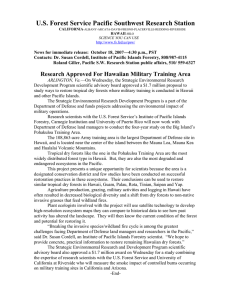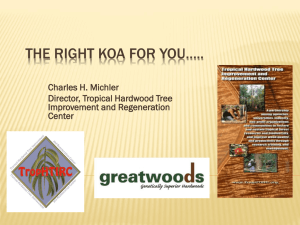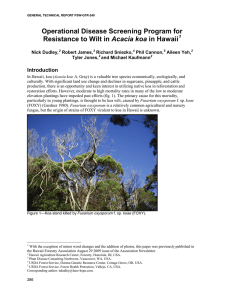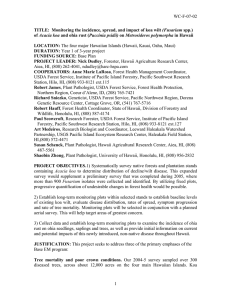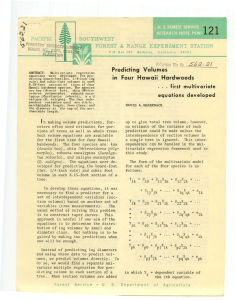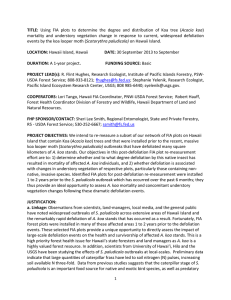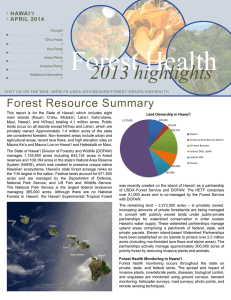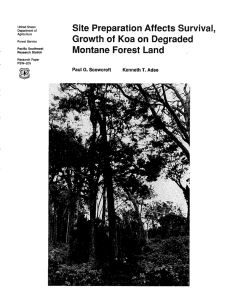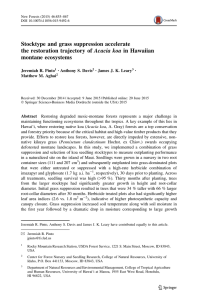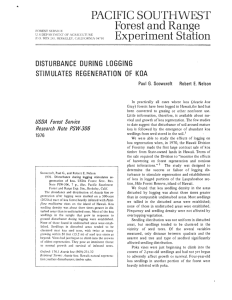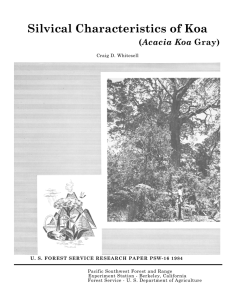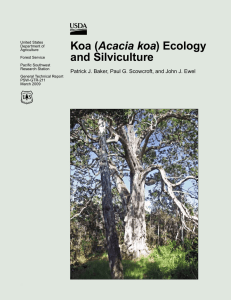U.S. Forest Service Pacific Southwest Research Station
advertisement
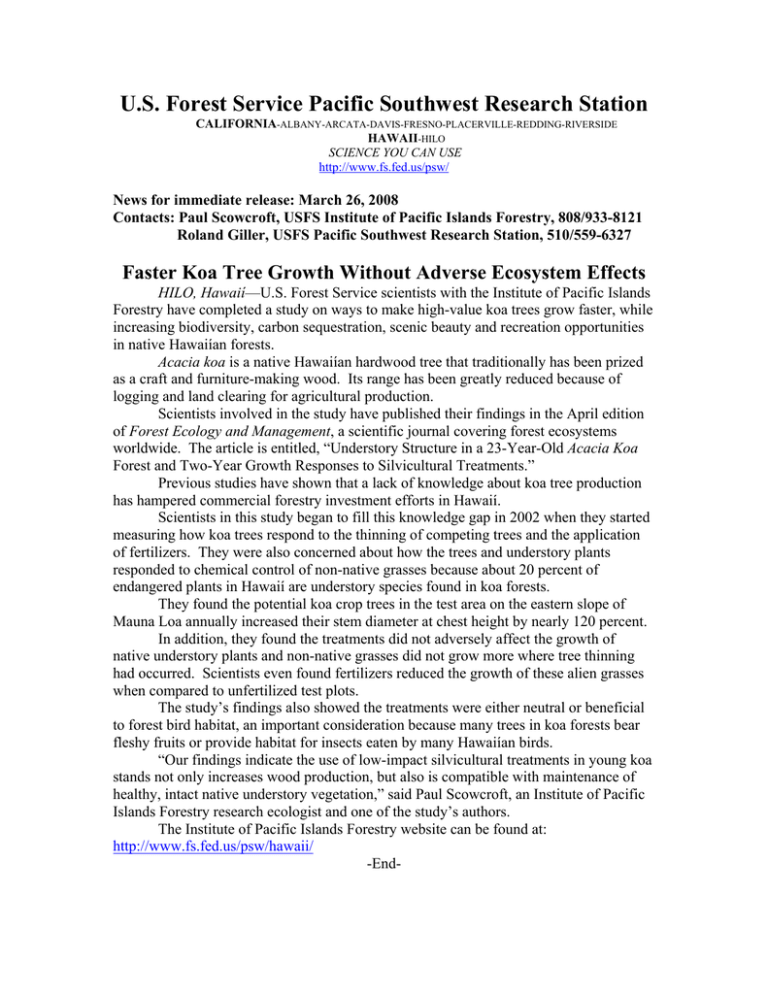
U.S. Forest Service Pacific Southwest Research Station CALIFORNIA-ALBANY-ARCATA-DAVIS-FRESNO-PLACERVILLE-REDDING-RIVERSIDE HAWAII-HILO SCIENCE YOU CAN USE http://www.fs.fed.us/psw/ News for immediate release: March 26, 2008 Contacts: Paul Scowcroft, USFS Institute of Pacific Islands Forestry, 808/933-8121 Roland Giller, USFS Pacific Southwest Research Station, 510/559-6327 Faster Koa Tree Growth Without Adverse Ecosystem Effects HILO, Hawaií—U.S. Forest Service scientists with the Institute of Pacific Islands Forestry have completed a study on ways to make high-value koa trees grow faster, while increasing biodiversity, carbon sequestration, scenic beauty and recreation opportunities in native Hawaiían forests. Acacia koa is a native Hawaiían hardwood tree that traditionally has been prized as a craft and furniture-making wood. Its range has been greatly reduced because of logging and land clearing for agricultural production. Scientists involved in the study have published their findings in the April edition of Forest Ecology and Management, a scientific journal covering forest ecosystems worldwide. The article is entitled, “Understory Structure in a 23-Year-Old Acacia Koa Forest and Two-Year Growth Responses to Silvicultural Treatments.” Previous studies have shown that a lack of knowledge about koa tree production has hampered commercial forestry investment efforts in Hawaií. Scientists in this study began to fill this knowledge gap in 2002 when they started measuring how koa trees respond to the thinning of competing trees and the application of fertilizers. They were also concerned about how the trees and understory plants responded to chemical control of non-native grasses because about 20 percent of endangered plants in Hawaií are understory species found in koa forests. They found the potential koa crop trees in the test area on the eastern slope of Mauna Loa annually increased their stem diameter at chest height by nearly 120 percent. In addition, they found the treatments did not adversely affect the growth of native understory plants and non-native grasses did not grow more where tree thinning had occurred. Scientists even found fertilizers reduced the growth of these alien grasses when compared to unfertilized test plots. The study’s findings also showed the treatments were either neutral or beneficial to forest bird habitat, an important consideration because many trees in koa forests bear fleshy fruits or provide habitat for insects eaten by many Hawaiían birds. “Our findings indicate the use of low-impact silvicultural treatments in young koa stands not only increases wood production, but also is compatible with maintenance of healthy, intact native understory vegetation,” said Paul Scowcroft, an Institute of Pacific Islands Forestry research ecologist and one of the study’s authors. The Institute of Pacific Islands Forestry website can be found at: http://www.fs.fed.us/psw/hawaii/ -End-



